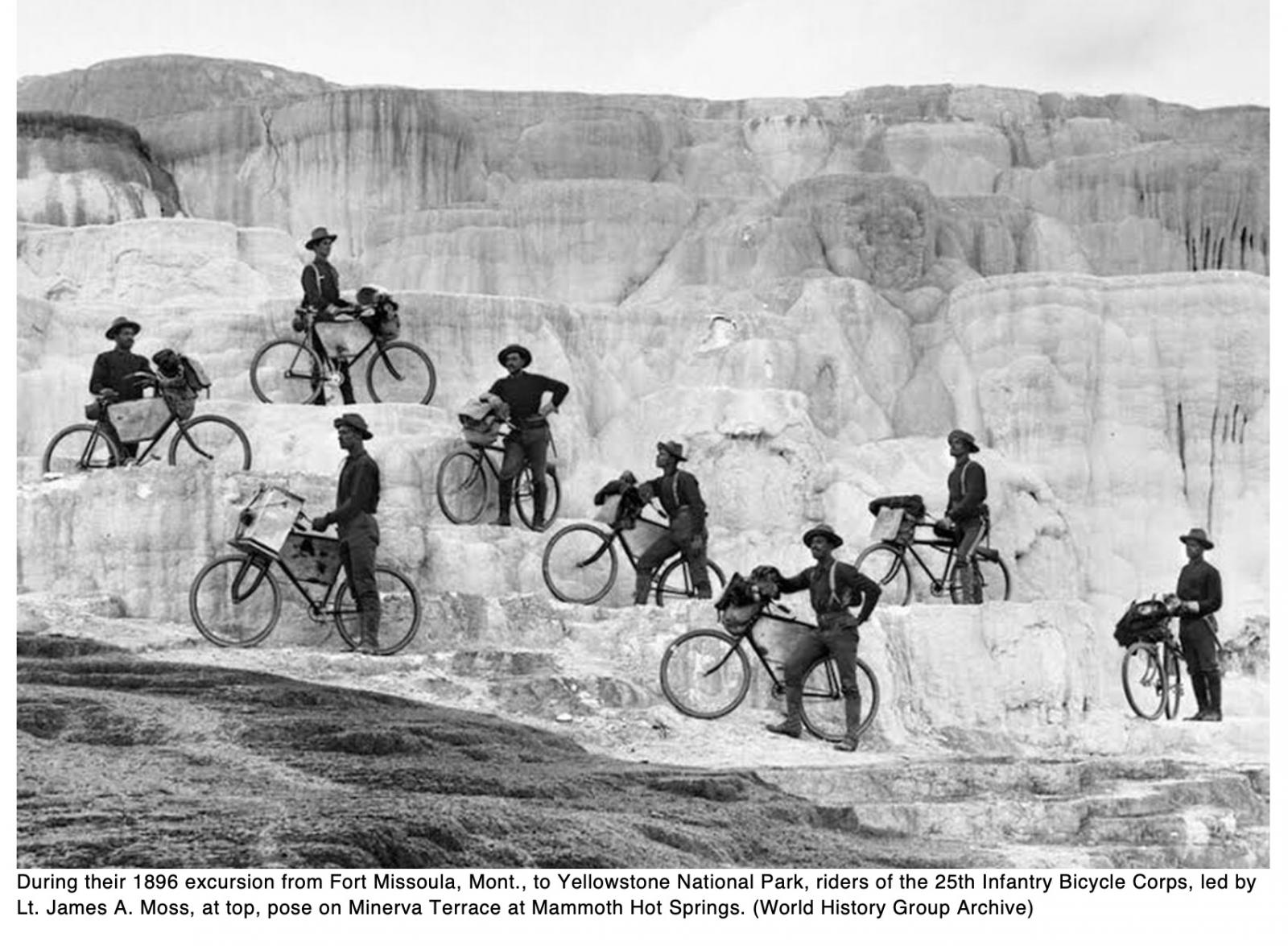
In 1869, the Army formed the experimental 25th Infantry Bicycle Corps as one of a few specially designated African-American military units — one that traveled via bicycle. Its members were the famed Buffalo Soldiers.
“There is no doubt in my mind that during the next great war, the bicycle, with such modifications and adaptations as experience may suggest, will become a most important machine for military purposes," according to then-Maj. Gen. Nelson Miles.
Though these sentiments arose at a time when horseback was the chief method of travel, and brass like Miles expressed much optimism about the use of the bike in future warfare, trekking vast stretches of unpredictable terrain may now seem ill-advised.
Helmed by West Point graduate Lt. James Moss, the 25th Infantry was stationed on the Texas border for peacekeeping purposes before being moved to the Dakota Territory in 1880. Its final station was Missoula, Montana, which recieved the regiment eight years later.
Moss, aided by Nelson, managed a fleet of bicycles donated by the A.G. Spalding Company.
“Moss worked with the company to modify the vehicles for military service,” Atlas Obscura reported. “The bikes were outfitted with a canvas tent, sleeping bag, and blanket that rolled up and attached to the handlebars, and a hard shell case that fit into the space in the middle of the frame, for further storage.”
The eight-man unit set off to ride roughly 40 miles each day with guns on their back and bikes that, when fully equipped, weighed around 59 pounds, the Fort Missoula Museum noted.
In 1896, the 25th made its first sojourn from Fort Missoula to Yellowstone National Park, tackling roughly 800 miles, including the return journey. A year later, Moss, along with another white officer, assistant surgeon James Kennedy, would travel with their now 20 black compatriots on a 1,900 mile expedition to St. Louis, Missouri.
“The chosen route closely followed the Northern Pacific Railroad from the corps headquarters at Fort Missoula to Billings, Montana,” HistoryNet reported. “From there it paralleled the Burlington Northern Railroad through Wyoming, South Dakota, Nebraska, and Missouri.”
The unit’s enlisted men were divided into two squads headed by Lance Corporals William Haynes and Abram Martin. Sergeant Mingo Sanders was Acting First Sergeant of the Corps, according to the Fort Missoula History Museum. They carried only two days ration with stops scheduled every 100 miles, forcing them to ride 50 miles each day.
However encouraged he may have been by the success of the Yellowstone mission, Moss detailed a different experience in his description of the St. Louis endeavor.
“The bicycle, as a machine for military purposes, was most thoroughly tested under all possible conditions, except that of being under actual fire," Moss wrote to the Army’s Adjutant General. "The Corps went through a veritable campaign, suffering from thirst, hunger, and the ill effects of alkali water, cold, heat and loss of sleep. A number of times we went into camp wet, muddy, hungry and tired … Much of the time the roads were so bad that the Corps had to dismount and push their wheels along railroad tracks.”
Moss and the Buffalo Soldiers completed the journey in 40 days, but in the time it took to travel, the U.S. lost interest in pursuing the program and would not permit the Bicycle Corps to continue on to Minneapolis. The unit was sent home by train.
After, Moss appealed to Army leadership to approve a trip from Fort Missoula to San Francisco, California. However, in the wake of the Spanish-American War, the mission was never completed. The men of the 25th were ultimately assigned to Maj. Gen. William R. Shafter’s V Corps, which deployed to Cuba.
But perhaps it was fate. Despite the 25th Infantry Bicycle Corps proving that the pennyfarthing could move troops twice as fast as horses in 1897, it was only be a few short years before the automobile would disrupt the way battles were fought on all fronts, forever changing the face of warfare. Still, it’s certainly fun to imagine how a bicycle battalion might have evolved to fight in a jungle or urban combat situation.